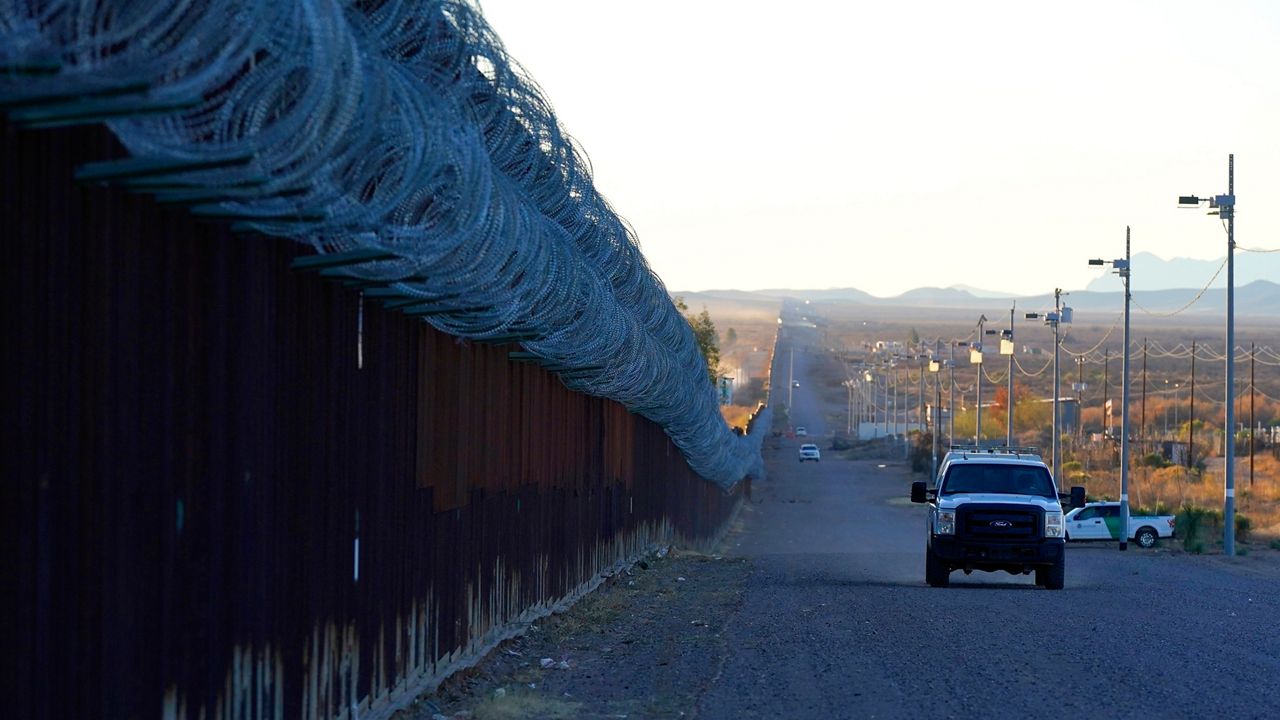The Biden administration on Tuesday detailed a six-part plan to handle a predicted influx of migrants at the U.S.-Mexico border in the midst of a court battle over the government’s use of a Title 42 health authority implemented early in the pandemic.
On April 1, the U.S. Centers for Disease Control and Prevention announced they would end the Title 42 public health authority by May 23, a Trump-era policy that allows the U.S. to quickly expel migrants seeking asylum in an effort to prevent the spread of COVID-19.
A federal judge on Monday said he would grant a temporary restraining order requested by several GOP-led states to stop the U.S. government from processing immigrants at the southern border under pre-pandemic guidelines, although the order will expire in two weeks unless the courts or Congress take further action, per the New York Times.
Senior officials from the Department of Homeland Security told reporters on Tuesday the agency would “comply with the court order,” adding they “really disagree with the basic premise.”
“If and when the court actually issues the [temporary restraining order] the department is planning to comply with that order,” an administration official said in a Tuesday press call. “I would note though, that when the Title 42 order is lifted we intend to significantly expand the use of expedited removal through our Title 8 authorities and thereby impose longterm law enforcement consequences on those who seek to cross the border without a lawful basis to do so.”
The department and the federal government at large have been planning for the termination of the Title 42 health authority for some time, as officials “anticipate migration levels will increase, as smugglers will seek to take advantage of and profit from vulnerable migrants” once the border is reopened to pre-pandemic levels.
DHS on Tuesday detailed a six-part plan to “prepare for and manage increased encounters of noncitizens at our Southwest Border,” the agency said in a release, some of which will come if and when Title 42 authority ends.
Those pillars include:
To increase resources, personnel, transportation and facilities at crossings along the U.S.-Mexico border
Streamlined and enhanced processing protocols at Border Patrol stations to ease overcrowding
The increased use of expedited removal for unlawful entries, as well as consequences ranging from removal to prosecution
To create stronger partnerships with non-governmental organizations to host noncitizens awaiting the results of immigration proceedings
To intensify “disruption efforts” targeting transnational criminal operations like drug trafficking and human smuggling
Deter irregular migration to the United States’ southern border through partnerships with other nations in the Western Hemisphere
“Simply put: When Title 42 is lifted, asylum and other legal migration pathways will remain available to those seeking protection, and those who don't qualify will be promptly removed where possible,” officials said.
The government plans to deploy and additional 500 full-time and contract positions to the Border Patrol in the months to come to address the first two pillars in its plan. The Biden administration's FY2023 budget request included funds for another 300 processing coordinators and 300 patrol station agents, which the White House says "would be the first increase in the number of Border Patrol Agents since 2011," should Congress approve the request.
In another effort to ease transportation chokeholds, DHS announced plans to contract another nearly 400 bus movements per day by April 29, which would nearly double the agency's daily capacity to transport individuals between locations.
Tuesday’s announcement builds upon a DHS fact sheet released in late March just ahead of the CDC’s announcement that it planned to terminate the Title 42 authority. At the time, the agency outlined a four-part approach to “address a potential increase in the number of border encounters.
“We thought it was prudent to produce this document that [...] really memorializes all of the efforts that have been underway, really for many months and over a year in some cases, to address all these issues in a holistic and comprehensive way,” officials said Tuesday.
In the past three weeks, U.S. Customs and Border Protection agents have intercepted, on average, 7,800 migrants at the U.S.-Mexico border per day, per government data. Those numbers reflect an “exponential increase” from the daily average of 1,600 crossings seen in the pre-pandemic years of 2014 - 2019. Officials also noted an increase in single adults claiming fear of persecution and a “steady flow” of unaccompanied children – particularly from Cuba, Venezuela and Nicaragua, who accounted for 37% of non-Mexican encounters so far in 2022.
But the political back-and-forth over the government’s use of Title 42 authority dates back – for President Joe Biden, at least – to the first day of the Biden-Harris administration, when the president suspended the program. After Texas and Missouri sued, lower courts required immigration officials to reinstate it, though the current administration has sent far fewer people back to Mexico than its predecessor.
Border agents stopped migrants 221,000 times in March 2022 and nearly 66,000 migrants were released in the United States, according to a government court filing.



